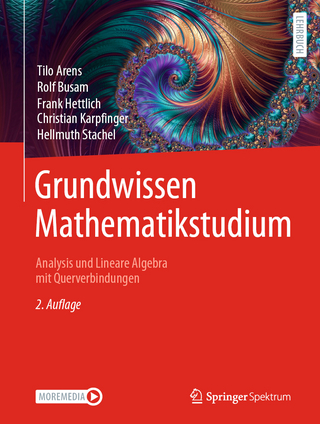
Network Models for Data Science
Cambridge University Press (Verlag)
978-1-108-83576-3 (ISBN)
This text on the theory and applications of network science is aimed at beginning graduate students in statistics, data science, computer science, machine learning, and mathematics, as well as advanced students in business, computational biology, physics, social science, and engineering working with large, complex relational data sets. It provides an exciting array of analysis tools, including probability models, graph theory, and computational algorithms, exposing students to ways of thinking about types of data that are different from typical statistical data. Concepts are demonstrated in the context of real applications, such as relationships between financial institutions, between genes or proteins, between neurons in the brain, and between terrorist groups. Methods and models described in detail include random graph models, percolation processes, methods for sampling from huge networks, network partitioning, and community detection. In addition to static networks the book introduces dynamic networks such as epidemics, where time is an important component.
Alan J. Izenman is Professor of Statistical Science at Temple University. He received his Ph.D. from the University of California, Berkeley. He was a faculty member at Tel Aviv University and Colorado State University, and was a visiting faculty member at the University of Chicago, the University of Minnesota, and Stanford University. He was Program Director of Statistics and Probability at NSF (1992-94). A Fellow of the ASA, RSS, and ISI, he has served on the Editorial Boards of JASA, Law, Probability, and Risk, and Statistical Analysis and Data Mining. He is the author of Modern Multivariate Statistical Techniques (2013).
Preface; 1. Introduction and preview; 2. Examples of networks; 3. Graphs and networks; 4. Random graph models; 5. Percolation on Zd; 6. Percolation beyond Zd; 7. The topology of networks; 8. Models of network evolution and growth; 9. Network sampling; 10. Parametric network models; 11. Graph partitioning: i. graph cuts; 12. Graph partitioning: ii. community detection; 13. Graph partitioning: iii. spectral clustering; 14. Graph partitioning: iv. overlapping communities; 15. Examining network properties; 16. Graphons as limits of networks; 17. Dynamic networks; Index of examples; Author index; Subject index.
| Erscheinungsdatum | 22.09.2021 |
|---|---|
| Zusatzinfo | Worked examples or Exercises |
| Verlagsort | Cambridge |
| Sprache | englisch |
| Maße | 185 x 259 mm |
| Gewicht | 1140 g |
| Themenwelt | Mathematik / Informatik ► Mathematik |
| ISBN-10 | 1-108-83576-7 / 1108835767 |
| ISBN-13 | 978-1-108-83576-3 / 9781108835763 |
| Zustand | Neuware |
| Haben Sie eine Frage zum Produkt? |
aus dem Bereich


